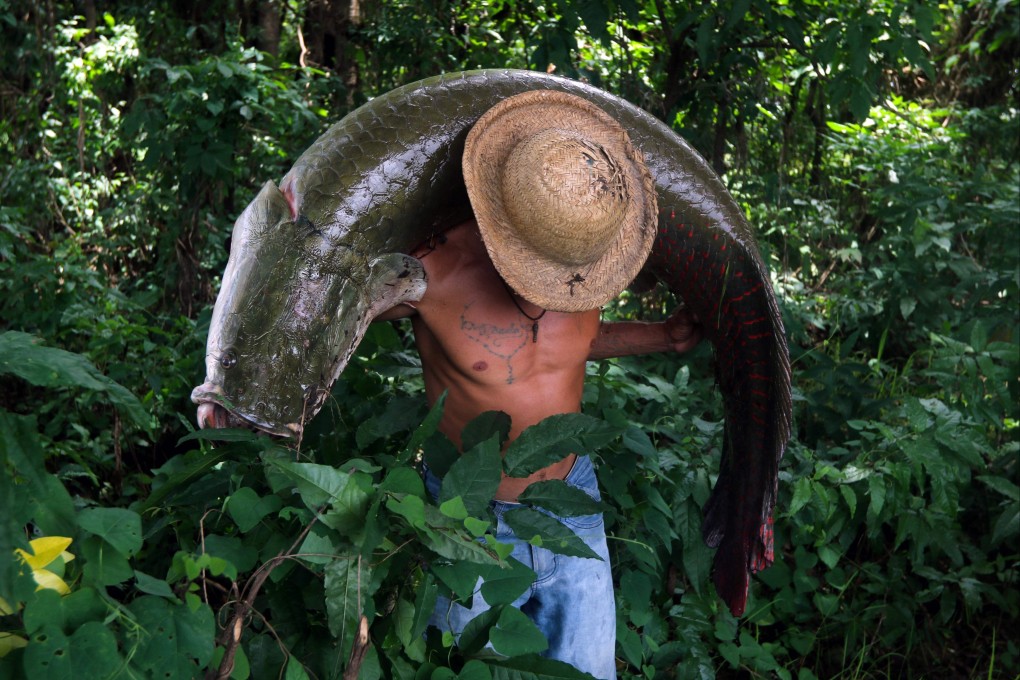In the Amazon a huge fish is making a comeback, amid cooperation galore
- The pirarucu, the largest of 2,300 known fish species in Amazon floodplain lakes, was at risk of extinction but is now flourishing
- It’s thanks to various groups, including indigenous, non-indigenous people, collaborating to reduce illegal fishing and leave forest alone

Even in the most biodiverse rainforest of the world, the pirarucu, also known as arapaima, stands out.
First, there is its mammoth size: it can weigh up to 200kg (440 pounds), by far the largest of 2,300 known fish species in the Amazon. It is found primarily in floodplain lakes across the Amazon basin, including the region of Medio Jurua.
Secondly, the giant fish not so long ago nearly vanished from Jurua, as vessels swept the lakes with large nets. The illegal and unsustainable fishing left river and indigenous communities struggling to catch their staple food. And it left pirarucu designated as threatened with extinction, unless trade in the fish is closely controlled by the Convention on International Trade in Endangered Species of Wild Fauna and Flora.
But now something remarkable has happened. The fish has come back to the lakes of Medio Jurua. The story of how involves people of different backgrounds cooperating on many levels – a vision of what is possible that veterans of the Amazon say they have seen nowhere else across the vast region.
It worked. Now, local communities produce açai, vegetable oils and rubber, and they leave the forest standing. Most successful of all has been the management of pirarucu.
